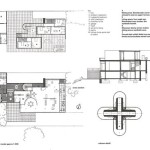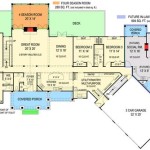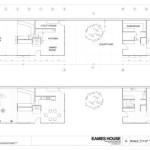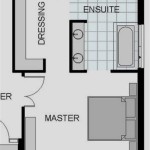Container Living Plans: A Comprehensive Guide
Container homes have emerged as a viable and increasingly popular housing alternative. Utilizing repurposed shipping containers, these structures offer unique benefits, including affordability, durability, and sustainability. Careful planning is essential for a successful container home project. This guide explores key aspects of crafting effective container living plans.
Choosing the Right Container
Selecting appropriate shipping containers is the foundation of any container home project. Several factors influence this choice, including:
- Size and Dimensions: Standard containers come in 20-foot and 40-foot lengths. Consider the desired living space and overall design when choosing the right size.
- Condition: Containers are available in various conditions, including new (one-trip), used, and cargo-worthy. Assess the container’s structural integrity and any potential repairs needed.
- Cost: Container prices vary depending on size, condition, and location. Factor in transportation costs to the building site.
Site Preparation and Foundation
Proper site preparation is crucial for the stability and longevity of a container home. Key considerations include:
- Building Permits: Research and obtain necessary building permits from local authorities before starting the project.
- Site Survey: Conduct a thorough site survey to assess soil conditions, drainage, and potential hazards.
- Foundation Type: Choose an appropriate foundation, such as a concrete slab, piers, or a basement, depending on the site and local building codes.
- Utilities: Plan for utility connections, including water, electricity, and sewage, before placing the containers.
Design and Floor Plans
Effective design is essential for creating a comfortable and functional container home. Key design aspects to consider:
- Layout: Develop a detailed floor plan that optimizes space utilization and flow within the container(s).
- Natural Light: Incorporate windows and doors strategically to maximize natural light and ventilation.
- Insulation: Proper insulation is vital for regulating temperature and minimizing energy consumption.
- Interior Finishes: Choose appropriate interior finishes that complement the container aesthetic and enhance living comfort.
Modifications and Structural Integrity
Modifying shipping containers requires careful planning and execution to maintain structural integrity. Key points to consider:
- Cutting and Welding: Consult with structural engineers when cutting or welding sections of the container to ensure structural stability.
- Reinforcement: Reinforce modified areas as needed to compensate for any loss of structural strength.
- Rust Prevention: Implement rust prevention measures, such as painting and sealing, to protect the container from corrosion.
Plumbing and Electrical Systems
Installing plumbing and electrical systems in a container home requires specialized knowledge and adherence to building codes. Key aspects include:
- Professional Installation: Engage qualified plumbers and electricians to ensure safe and compliant installations.
- Routing and Placement: Plan the routing of pipes and wires carefully to minimize disruption and maximize efficiency.
- Insulation and Protection: Insulate and protect pipes and wires from extreme temperatures and potential damage.
HVAC and Ventilation
Maintaining comfortable indoor temperatures and air quality is essential in a container home. Key points to consider are:
- HVAC System: Choose an appropriate HVAC system, such as a mini-split or ducted system, based on the climate and the size of the home.
- Ventilation: Ensure adequate ventilation to prevent moisture buildup and improve indoor air quality.
- Energy Efficiency: Opt for energy-efficient HVAC systems and insulation to minimize energy consumption.
Exterior Finishes and Landscaping
The exterior finish of a container home contributes significantly to its aesthetic appeal and protection from the elements. Key considerations include:
- Cladding: Consider cladding options such as wood, metal siding, or stucco to enhance the appearance and provide additional insulation.
- Roofing: Choose a suitable roofing material that complements the design and provides adequate weather protection.
- Landscaping: Integrate landscaping elements to enhance the overall aesthetic and create outdoor living spaces.
Budget and Timeline
Developing a realistic budget and timeline is crucial for a successful container home project. Key points to consider during this phase:
- Cost Estimation: Estimate the cost of materials, labor, permits, and other expenses accurately.
- Contingency Planning: Include a contingency fund to cover unexpected costs or delays.
- Project Schedule: Develop a realistic project schedule that outlines key milestones and deadlines.

9 Container Home Floor Plans That Maximize Space House

Container Home 6 Floorplan Design Plans House

Container Home Plans Blueprints Housing

20 Foot Container Home Floor Plans

Container Home Floor Plans Types Examples Considerations Cedreo

Container Homes Floorplans 4 Projetos De Casas Populares Projeto Casa Feitas

40 Foot Container Containers Home Construction Plan House Plans Homes Accessory Dwelling Unit

View All Floor Plans Custom Container Living

Container Home Plans Cmg Containers

Affordable Housing Container Home Plans








